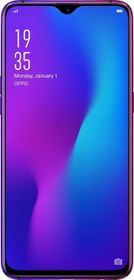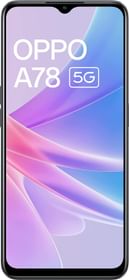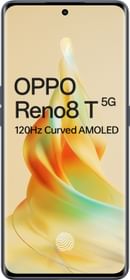Qualcomm’s Snapdragon 660 launched last year was a very powerful SoC that dragged down quite a few flagship 800-series features to mid-range phones. The chipset didn’t gain much traction in the better part of this year, but is now available on several competent mid-range options.
Quite recently, Qualcomm also introduced its new Snapdragon 700 tier which has been designed to be a branding that does better justice to ‘Sub-premium’ phones than 600-series.
Fresh-out-of-foundry Snapdragon 670, is meant to bridge the gap between Snapdragon 660 and the Snapdragon 710. However, considering the state of the current market, both of these chipsets will eventually be competing in the near same budget.
Let’s compare the two to know how they are different.
Note: We have updated list of phones with Snapdragon 670 mobile platform below:
Also Read: DynamIQ vs big.LITTLE Architecture: What has changed
Snapdragon 670 vs Snapdragon 710 Specifications
| Mobile platform | Snapdragon 670 | Snapdragon 710 |
| Core configuration | 2.0 GHz Kryo 360 (Cortex- A75 based) x 2
1.7GHz Kryo 360 (Cortex-A55 based) x 6 |
2.2 GHz Kryo 360 (Cortex- A75 based) x 2
1.7GHz Kryo 360 (Cortex-A55 based) x 6 |
| Process | 10nm LPP | 10nm LPP |
| GPU | Adreno 615 | Adreno 616 |
| Memory support | 2x 16-bit LPDDR4X
14.9GB/s |
2x 16-bit LPDDR4X
14.9GB/s |
| Modem | Snapdragon X12 LTE
Download speed: 600Mbps |
Snapdragon X15 LTE Download speed: 800Mbps |
| DSP | Hexagon 685 | Hexagon 685 |
| ISP/Camera | Spectra 250 ISP
25MP single / 16MP dual |
Spectra 250 ISP
32MP single / 20MP dual |
| Encode/Decode | 2160p30, 1080p120
H.264 & H.265 |
2160p30, 1080p120
H.264 & H.265 10-bit Display pipeline for HDR Capture |
Snapdragon 670 VS Snapdragon 710: 6 Things that are different

As you can see, both of these chipsets are based on power-efficient 10nm process node (same as Snapdragon 845) and have a lot in common, including the same basic Core configuration (2+6, most probably DynamIQ architecture).
In fact, both the Snapdragon 660 and Snapdragon 710 are pin and software compatible, which is to say that OEMs can choose or switch between them without much effort.
They still have a few notable differences.
- The maximum clock frequency of performance Kryo 360 cores (Cortex-A75 based) is slightly lower on SD 670. Since power cores have the same frequency (1.7GHz) for both chipsets, there shouldn’t be an appreciable difference in real-world performance.
- These are the only two mid-range mobile platforms as of now that have Adreno 600-series GPUs. The GPU on SD 670 is numerically inferior to Adreno 616 on SD 710. How much of a difference that will make? According to Qualcomm, Snapdragon 710 offers 35% graphics performance improvement over 660 and the Snapdragon 670 offers 25% performance improvement over Snapdragon 660.
- The Display controller on Snapdragon 670 can only drive FHD+ resolution and the Snapdragon 710 can support up to QHD+ displays.
- Unlike the Snapdragon 670, Snapdragon 710 has 10-bit display pipelines and supports HDR Capture.
- The DSP and ISP are same on both Snapdragon 670 and Snapdragon 710, but they are run at a lower clock frequency on the former, thus support lower maximum camera resolution.
- The modem used on two SoCs are different. The Snapdragon 670 supports up to 600Mbps download speeds, which is lower compared to 800Mbps on Snapdragon 710.
List of Phones with Snapdragon 670:
In spite of all those differences, both of these mobile platforms are remarkably close in terms of positioning and feature set. Qualcomm could have probably marked SD 670 as a 700-series chip as well.
The Snapdragon 670 is available for purchase now and could make it to real-world devices very soon.
However, OEMs might prefer to side with the Snapdragon 710 that it entails an additional branding advantage. If that happens, SD 670 could hit an adoption snag, same as SD 660 did in its early life cycle.
Here’s a list of phones that have Snapdragon 670 chipset
1. Oppo R17
Just a week after the official announcement of Snapdragon 670, Oppo has announced a phone that employs its services.

The Oppo R17, that also has a ‘waterdrop’ notch has SD 670 coupled with 8GB RAM and 128GB of internal storage. The handset also has an in-display fingerprint sensor, 16MP rear camera, and 25MP selfie camera. A 3500mAh battery with VOOC fast charging fuels all hardware.
2. Vivo X23
Vivo X23 is quite similar to the Snapdragon 660-powered V11 Pro that Vivo launched in India. The phone has the same dual rear cameras (12MP+5MP), is powered by a Snapdragon 670 octa-core processor, and has a lower 12MP resolution selfie sensor at the front.

The Vivo X23 comes with 8GB of RAM and 128GB of internal storage. Other features include in-display fingerprint sensor, IR based face unlock, 3400mAh battery, and Dual 4G VoLTE.
3. Vivo Z3 V1813BA
Vivo might be confusing people with their naming conventions, but they are quite clear about using competent chipsets moving forward. This year, Vivo has been amongst the first few OEMs to pounce on the new Snapdragon 600-Series and 700-Series chipsets. 
The Vivo Z3 V1813BA became the second phone based on Snapdragon 670 platform. The SoC is assisted by 4GB RAM and is coupled with 64 GB internal storage. Vivo ships it with 6.3-inch full HD+ IPS screen, 12MP selfie camera and 16 MP + 2 MP dear rear cameras.
And that’s it. We will add more SD 670 phones to the list as they surface.































